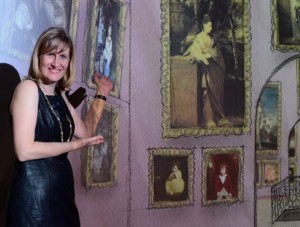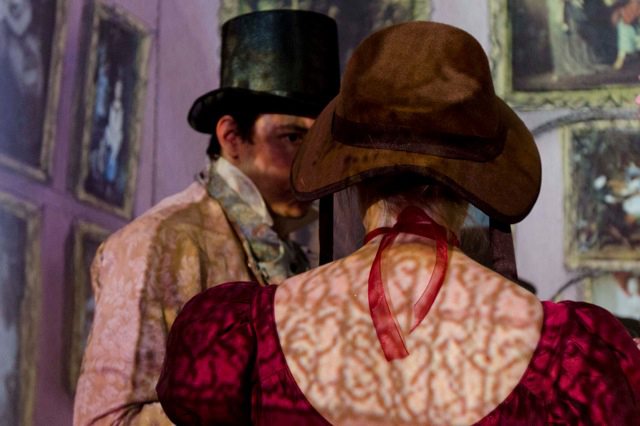The Department of English at The University of Texas at Austin has launched an online reconstruction of a famous art exhibit visited by novelist Jane Austen on May 24, 1813 – exactly 200 years ago to the day.
In a letter to her sister, Austen joked that she would be searching for a portrait of Mrs. Darcy among the portraits, says English Professor Janine Barchas, who created the virtual gallery — “What Jane Saw” — with a team of student assistants and staffers in Liberal Arts Instructional Technology Services (LAITS).
The e-gallery features 141 paintings by British portraitist Sir Joshua Reynolds that were displayed at the 1813 exhibition at the British Institution in Pall Mall, London. The show amounted to the first large commemorative exhibition devoted to a single artist.
In addition to offering new insight into Austen’s life and work, the e-gallery is the first to digitally reconstruct the blockbuster exhibition.
“Even if Jane Austen had not attended this public exhibit, it would still be well worth reconstructing,” says Barchas, author of “Matters of Fact in Jane Austen.” “The British Institution’s show was a star-studded ‘first’ of great magnitude for the art community and a turning point in the history of modern exhibit practices.”
Among the canvases in the retrospective gallery, the many celebrity portraits of 18th-century politicians, actors, authors and aristocrats offer concrete examples of just how someone such as Jane Austen, who did not personally circulate among the social elite, was nonetheless immersed in Georgian England’s vibrant celebrity culture.

The website takes advantage of the current digital toolkit to help transport visitors back to a specific event in 1813, the same year when Austen published “Pride and Prejudice.” Today, the paintings that took part in that exhibit are dispersed across the globe, and the original building in Pall Mall that once housed the British Institution is so altered as to be unrecognizable. Virtual reality, says Barchas, was the only way to put these objects back together.
“Seeing the art in situ revives the interpretive consequences of proximity and distance,” Barchas says. “For example, some sitters are judiciously juxtaposed while others — rival politicians or high-profile socialites — are hung at painstaking removes from key members of the royal family. Only a visual reconstruction allows the retrieval of these hidden narratives, hinting at the implied concerns of the original curators.”
As a special treat for guests at the pre-launch party, Barchas and the LAITS team constructed a 3-D walkthrough of the exhibit at the Texas Advanced Computing Center (TACC) Visualization Lab on May 9. Guests at the reception used an Oculus Rift Virtual Reality headset to experience the e-gallery as if they were there in person.
